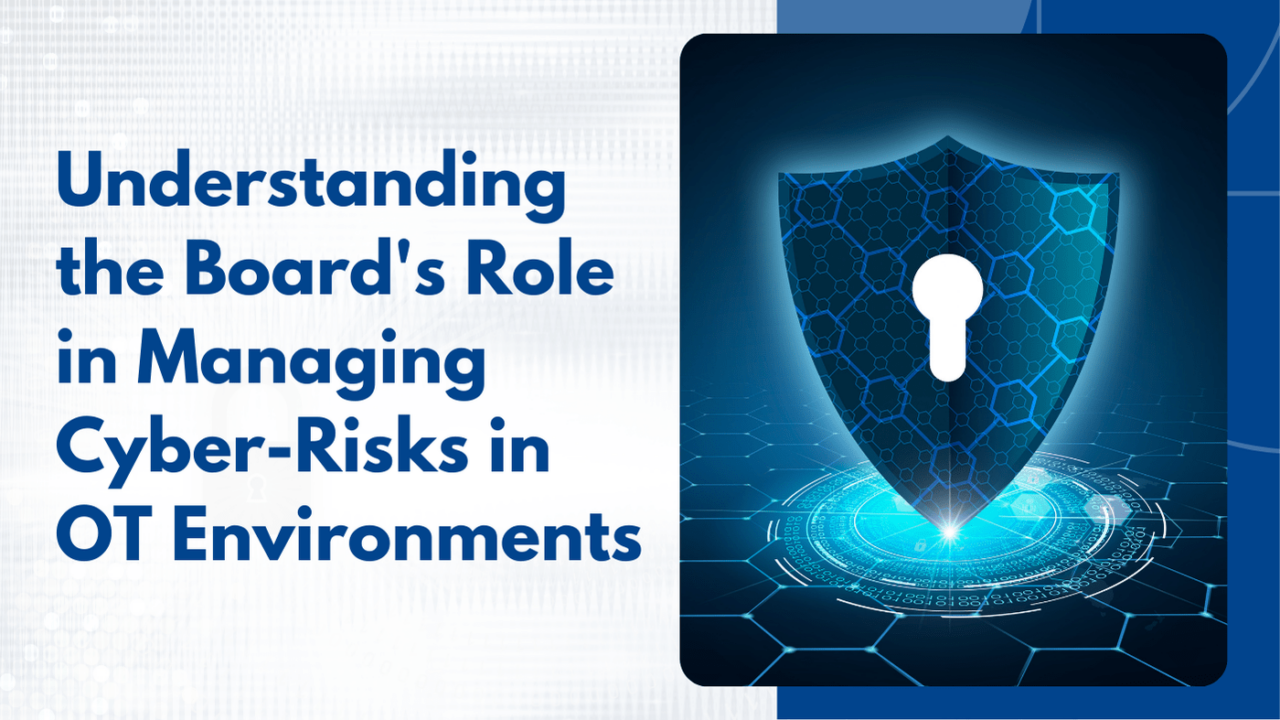Operational technology (OT) plays a crucial role in the energy, transportation, manufacturing, and production industries. OT systems, which consist of the hardware and software that manage physical processes and equipment, are essential for maintaining safe and reliable operations. However, the growing convergence of OT with information technology (IT) has expanded the cyber-attack surface, making OT systems more susceptible to threats. For boards of directors, this evolving risk landscape necessitates active involvement in overseeing and managing OT cybersecurity.
Key Challenges Boards Encounter in OT Cyber-Risk Management
A significant hurdle for many boards is the disconnect between OT expertise and board-level decision-making. Often, professionals with in-depth OT knowledge occupy roles far removed from the executive level. This gap can hinder risk awareness and impede informed decision-making within the boardroom.
Additionally, while Chief Information Security Officers (CISOs) typically oversee cybersecurity risks, their expertise may not extend to the specialized requirements of OT environments. The security vulnerabilities in OT systems differ substantially from those in traditional IT systems, potentially leading to misunderstanding, understaffing, or underfunding of OT cybersecurity. Such oversights can have catastrophic consequences.
To overcome challenges, appointing a dedicated OT cybersecurity leader is a crucial step in addressing the unique challenges posed by OT environments. The convergence of IT and OT systems increases vulnerability to cyber threats, making it essential to have a specialised focus on OT security. This leader would be responsible for bridging the gap between the CISO’s office and operational teams, aligning security strategies with business goals, and ensuring compliance with relevant regulations.
By positioning someone with expertise in OT cybersecurity at a leadership level, organizations signal that OT security is not just a technical issue but a strategic priority. Much like how EH&S and financial risk are prioritized, OT security should be integrated into the overall risk management framework of the organization. This can enhance incident response capabilities, improve proactive risk mitigation, and foster a culture of security awareness across both IT and OT departments.
Three Core Strategies for Informed Decision-Making in OT Environments
Boards must recognize that OT security breaches carry consequences distinct from those in IT environments. While IT breaches often result in data loss or financial compromise, OT breaches can cause physical damage, disrupt essential processes, lead to production loss, and even endanger health, safety, and the environment.
To address these risks effectively, organizations should:
- Adopt a Risk-Based Approach: Implement industry-recognized frameworks like ISA/IEC 62443-3-2. Such standards help partition OT systems into security zones and create credible risk scenarios, allowing organizations to identify and rank potential threats based on their likelihood and impact.
- Prioritize Risk Scenario Analysis: By developing and analysing potential threat scenarios, boards can gain a clearer picture of the most significant risks. Ranking these scenarios alongside other organizational risks ensures consistency and helps boards understand their relative importance in the broader business context.
- Appoint Specialized OT Cybersecurity Leadership: A dedicated leader focused solely on OT security will provide the necessary expertise and executive visibility, ensuring OT cybersecurity remains a top priority.
Achieving Comprehensive Cyber-Risk Management Across the Organization
Successful cyber-risk management requires separate yet coordinated programs for IT and OT security. While IT security centres on data confidentiality, integrity, and availability, OT security focuses on safety, operational continuity, and process integrity.
Boards can further enhance OT cybersecurity governance by:
- Establishing an OT Cybersecurity Governance Committee: Comprising executives from operations, engineering, IT, and finance, this committee fosters cross-functional collaboration and ensures OT cybersecurity is integrated into the organization’s overall risk management framework.
- Investing in OT Cybersecurity Expertise: Building internal expertise or partnering with specialized providers can significantly strengthen OT cybersecurity programs. This includes hiring skilled professionals, providing continuous training, and leveraging external support when necessary.
- Developing Robust OT Cybersecurity Programs: These programs should cover comprehensive risk assessments, vulnerability management, incident response planning, security awareness training, and continuous monitoring.
- Promoting IT-OT Collaboration: Effective cybersecurity relies on coordinated efforts between IT and OT teams. Sharing information, aligning policies, and collaborating on incident response plans can significantly bolster security.
- Regularly Updating Cybersecurity Strategies: Given the evolving threat landscape, organizations must continuously review and refine their cybersecurity strategies to stay ahead of emerging risks.
The Board’s Proactive Role in Strengthening OT Cybersecurity
To effectively manage cyber-risks in OT environments, boards must:
- Appreciate the distinct challenges and risks associated with OT cybersecurity.
- Understand the potential consequences of OT security breaches.
- Recognize the value of dedicated OT cybersecurity leadership.
By adopting these measures, boards can enhance their organization’s resilience against cyberattacks, protecting critical OT assets. Collaborating with specialized firms can further assist in aligning cybersecurity initiatives with broader business goals, ensuring that security outcomes are both effective and sustainable.
Conclusion
Boards of directors have a vital responsibility in overseeing cyber-risk management within OT environments. By addressing the unique challenges of OT security, investing in specialized expertise, and implementing strategic, proactive measures, organizations can build robust defences and safeguard essential operations from the growing threat of cyberattacks. Proactive board engagement not only strengthens security but also ensures the long-term resilience and sustainability of the organization’s operations.



